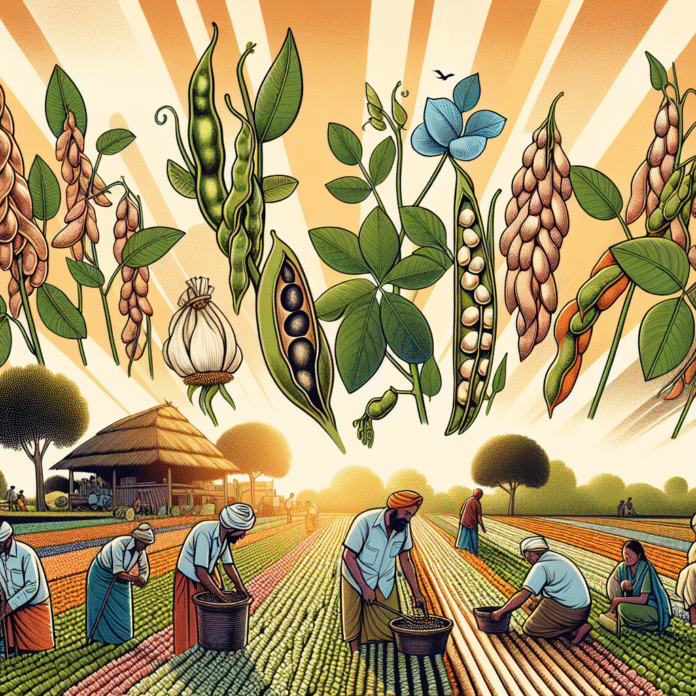India’s Guardians of Cowpea Preservation
India’s Seed Guardians: The Revival of Cowpea
India has long been a steward of biodiversity, and one of its notable contributions to global agriculture is the preservation of cowpea, a climate-resilient legume that is now gaining attention worldwide. Cowpea (Vigna unguiculata) is not just a staple in many Indian diets; it is also recognized for its remarkable adaptability to harsh environmental conditions, making it a vital crop in the face of climate change.
A Climate Resilient Crop
Cowpea is celebrated for its ability to thrive in arid conditions and poor soils, making it an essential resource for food security, particularly in regions prone to drought. This legume requires significantly less water compared to traditional crops, ensuring that it can be cultivated even in areas where water scarcity poses a challenge. Furthermore, cowpea contributes to soil health by fixing nitrogen, which enriches the soil and reduces the need for chemical fertilizers.
Preservation Efforts in India
In India, various organizations and local farmers are actively engaged in the preservation and promotion of indigenous cowpea varieties. Traditional farming practices and community seed banks have played a crucial role in maintaining the genetic diversity of this legume. These initiatives not only safeguard the unique traits of local cowpea varieties but also empower farmers by providing them with access to resilient seeds that can withstand changing climatic conditions.
Health and Nutritional Benefits
Beyond its agricultural significance, cowpea is a nutritional powerhouse. It is rich in protein, fiber, vitamins, and minerals, making it an excellent choice for addressing malnutrition, particularly among vulnerable populations. Incorporating cowpea into diets can help improve health outcomes, especially in rural areas where access to diverse food sources may be limited.
Global Recognition and Future Prospects
As the world increasingly recognizes the importance of sustainable agriculture, cowpea is emerging as a key player in climate-smart farming practices. Researchers and agriculturalists are exploring its potential for cultivation in various regions worldwide, especially in sub-Saharan Africa and parts of Latin America. The revival of interest in cowpea highlights the need for collaborative efforts to enhance its cultivation, improve yield, and expand its use in various culinary applications.
In conclusion, India’s commitment to preserving cowpea as a vital agricultural resource not only supports local communities but also contributes to global efforts in sustainable food production. As we continue to face the challenges posed by climate change, the lessons learned from India’s seed saviors can serve as a model for other nations seeking to protect and promote their agricultural heritage.


